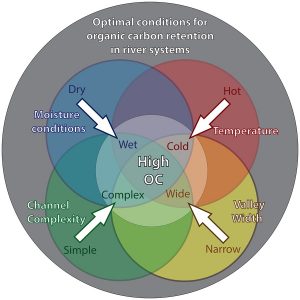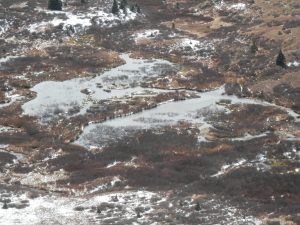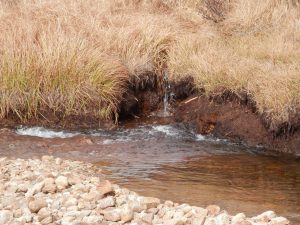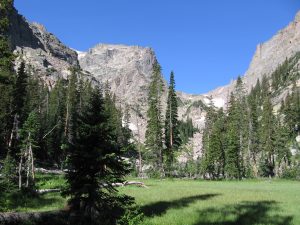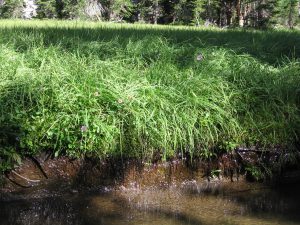We will soon be at the stage of research completion that we will feel confident enough to provide managers and landowners with concrete, practical advice on how to manage river systems to increase carbon retention.
While we are still collecting data and preparing these guidelines, we are soliciting suggestions on what specific topics are of interest to those that manage rivers. Please email us with any suggestions or questions, and we will do our best to integrate your suggestions and keep you in the loop as we develop guidelines and present them.
The following is a general overview of the factors that retain carbon on the landscape:
This figure, which is Figure 5 in Sutfin et al. (2016, Earth Surface Processes and Landforms), illustrates what we have found to be the optimal conditions for retaining organic carbon in river corridors: physically complex channels and floodplains with saturated soils. Obstructions to flow, such as instream wood and beaver dams, are among the features which promote physical channel complexity and floodplain saturation.
These beaver dams along Lake Creek near Independence Pass, Colorado, help to create high riparian water tables. The second photo illustrates water draining from the valley bottom back into the main channel during autumn base flow.
Ground water seeps along the valley bottom can also promote saturated soils with high organic carbon content, as seen in these photos along Andrews Creek in Rocky Mountain National Park, so protecting regional water tables can help to retain carbon in valley bottoms.

